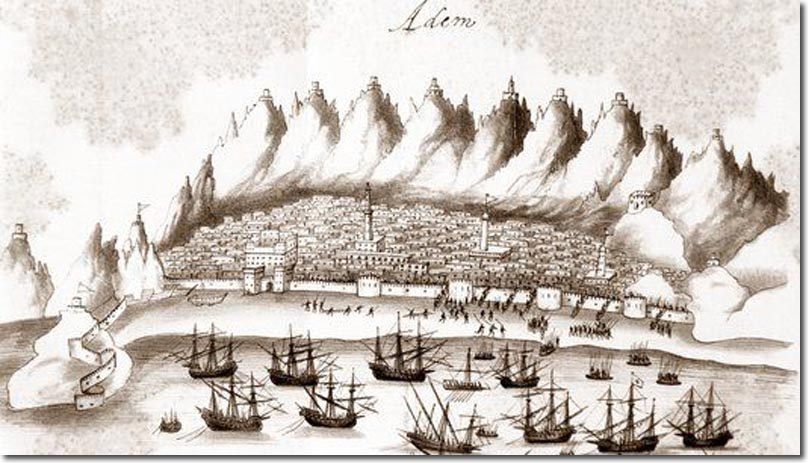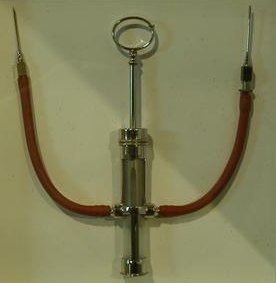|
Lahj
Lahij or Lahej (), formerly called Al-Hawtah, is a city and an area located between Ta'izz and Aden in Yemen. From the 18th to the 20th century, its rulers were of the Abdali branch of the Al-Sallami tribe who trace their lineage to one of the 10 tribes of Yaffa called Kalad. Lahij was the capital city of the Sultanate of Lahej, a protectorate of the British Empire until 1967, when the sultan was expelled and the city became a part of People's Republic of South Yemen. When Yemen Arab Republic and South Yemen merged on 22 May 1990, Lahij became part of the Republic of Yemen. It is located in the delta of the Wadi Tuban on the main trade route connecting Aden with Ta'izz, Ibb, and Sanaa. Al-Hawtah is known for the shrine of al-Salih Muzahim Ja'far, which attracts pilgrims from throughout Yemen during the month of Rajab. It is known as "al-Hawtah al-Ja'fariyyah" in his honor. History The capital of Lahj used to be at al-Ra'ra', which was destroyed when the Ottomans conquered th ... [...More Info...] [...Related Items...] OR: [Wikipedia] [Google] [Baidu] |
Aden
Aden () is a port city located in Yemen in the southern part of the Arabian peninsula, on the north coast of the Gulf of Aden, positioned near the eastern approach to the Red Sea. It is situated approximately 170 km (110 mi) east of the Bab-el-Mandeb strait. With its strategic location on the coastline, Aden serves as a gateway between the Red Sea and the Arabian Sea, making it a crucial maritime hub connecting Africa, Asia, and the Middle East. As of 2023, Aden city has a population of approximately 1,080,000 residents, making it one of the largest cities in Yemen. Aden is the capital and principal part of Aden Governorate, encompassing eight districts. During the colonial period, the name ''Aden'' referred to the area along the north coast of the gulf, encompassing Tawahi (Aden), Tawahi, Mualla, Crater (Aden), Crater, and much of Khor Maksar district. The western harbour peninsula, known as ''Little Aden'', now falls within the Al Buraiqeh district, Al Buraiqeh distr ... [...More Info...] [...Related Items...] OR: [Wikipedia] [Google] [Baidu] |
Al Anad Air Base
Al Anad Air Base is a Yemeni military air base located in Tuban district of the Lahij Governorate. It is the biggest air base in Yemen. History The base was built by the Soviet Union for South Yemen during the Cold War. The base witnessed fierce battles during the 1994 Yemeni Civil War as it was one of the key entry points to Aden. The base served as a headquarters for United States intelligence-gathering and counterterrorism operations in southern Yemen until the aftermath of the Houthi takeover in Yemen when the Houthis launched a military offensive against the remnants of the Western-backed administration in Aden. In March 2015, the U.S. withdrew its remaining special forces from the base when Al-Qaeda in the Arabian Peninsula (AQAP) briefly took over the governornate. Days later, on 25 March, the installation was taken over by Houthi fighters and the 201st Armoured Brigade of the Yemen Army. The following day, forces loyal to President Abd Rabbuh Mansur Hadi Ab ... [...More Info...] [...Related Items...] OR: [Wikipedia] [Google] [Baidu] |
Sultanate Of Lahej
Lahej ( '), the Sultanate of Lahej ( '), or, sometimes, the Abdali Sultanate ( '')'', was a Sheikdom based in Lahij in Southern Arabia. The Sultanate became self-ruling in 1728 and gained independence in 1740. In 1839, the Sultanate became part of the Aden Protectorate of the British Empire, though nominally the 'Abdali Sultan retained his status. The Aden Protectorate was briefly ruled again by the Ottomans during World War I, but regained by the British after the Ottoman defeat in World War I and absorbed into Federation of South Arabia in 1963. The 'Abdali dynasty was officially abolished in 1967, with the proclamation of South Yemen. History Establishment Lahej was a sultanate of the 'Abdali dynasty. In 1740 the 'Abdali sultan became independent.''Encyclopædia Britannica'', 1984 Edition, Vol. I, p. 11 It became independent thanks to the fracturing of the Zaidi State in north Yemen. The Sultanate of Lahej became an independent entity, from 1728 to 1839. The arrival of t ... [...More Info...] [...Related Items...] OR: [Wikipedia] [Google] [Baidu] |
Al-Qaeda In The Arabian Peninsula
Al-Qaeda in the Arabian Peninsula ( or : Tanẓīm Qā‘idat al-Jihād fī Jazīrat al-‘Arab, . Organization of Jihad's Base in the Arabian Peninsula), or AQAP is a Sunni Islam, Sunni Islamic extremism, Islamist militant organization which seeks to overthrow the Cabinet of Yemen, Yemeni government and establish the Islamic Emirate of Yemen. Part of the al-Qaeda network, the group is based and primarily active in Yemen, while also conducting operations in Saudi Arabia. It is considered the most active of al-Qaeda's affiliates that emerged after the weakening of central leadership. Established in 2009 as a merger between al-Qaeda in Yemen and al-Qaeda of Saudi Arabia, al-Qaeda in Saudi Arabia, the group took advantage of the 2011 Yemeni Revolution to seize and establish several emirates in southern Yemen, including Battle of Zinjibar, in Zinjibar, the capital of Abyan Governorate, Abyan governorate. After being driven out through 2012 Abyan offensive, a government offensive in ... [...More Info...] [...Related Items...] OR: [Wikipedia] [Google] [Baidu] |
Tahirids
The Tahirid dynasty (, ) was an Arabized Sunni Muslim dynasty of Persian dehqan origin that ruled as governors of Khorasan from 821 to 873 as well as serving as military and security commanders in Abbasid Baghdad until 891. The dynasty was founded by Tahir ibn Husayn, a leading general in the service of the Abbasid caliph al-Ma'mun. For his support of al-Ma'mun in the Fourth Fitna, he was granted the governance of Khorasan. The Tahirids, however, were not an independent dynasty—according to Hugh Kennedy: "The Tahirids are sometimes considered as the first independent Iranian dynasty, but such a view is misleading. The arrangement was effectively a partnership between the Abbasids and the Tahirids." Indeed, the Tahirids were loyal to the Abbasid caliphs and in return enjoyed considerable autonomy; they were in effect viceroys representing Abbasid rule in Persia. The tax revenue from Khorasan sent to the caliphal treasury in Baghdad was perhaps larger than those collected p ... [...More Info...] [...Related Items...] OR: [Wikipedia] [Google] [Baidu] |
Vaccine
A vaccine is a biological Dosage form, preparation that provides active acquired immunity to a particular infectious disease, infectious or cancer, malignant disease. The safety and effectiveness of vaccines has been widely studied and verified. A vaccine typically contains an agent that resembles a disease-causing microorganism and is often made from weakened or killed forms of the microbe, its toxins, or one of its surface proteins. The agent stimulates the body's immune system to recognize the agent as a threat, destroy it, and recognize further and destroy any of the microorganisms associated with that agent that it may encounter in the future. Vaccines can be prophylaxis, prophylactic (to prevent or alleviate the effects of a future infection by a natural or "wild" pathogen), or therapeutic vaccines, therapeutic (to fight a disease that has already occurred, such as cancer vaccine, cancer). Some vaccines offer full sterilizing immunity, in which infection is prevented. T ... [...More Info...] [...Related Items...] OR: [Wikipedia] [Google] [Baidu] |
Power Outage
A power outage, also called a blackout, a power failure, a power blackout, a power loss, a power cut, or a power out is the complete loss of the electrical power network supply to an end user. There are many causes of power failures in an electricity network. Examples of these causes include faults at power stations, damage to Electric power transmission, electric transmission lines, Electrical substation, substations or other parts of the electricity distribution, distribution system, a short circuit, Cascading failure#Cascading failure in power transmission, cascading failure, fuse (electrical), fuse or circuit breaker operation. Power failures are particularly critical at sites where the environment and public safety are at risk. Institutions such as hospitals, Sewage Treatment, sewage treatment plants, and mining, mines will usually have backup power sources such as emergency power system, standby generators, which will automatically start up when electrical power is lost ... [...More Info...] [...Related Items...] OR: [Wikipedia] [Google] [Baidu] |
US Dollar
The United States dollar (symbol: $; currency code: USD) is the official currency of the United States and several other countries. The Coinage Act of 1792 introduced the U.S. dollar at par with the Spanish silver dollar, divided it into 100 cents, and authorized the minting of coins denominated in dollars and cents. U.S. banknotes are issued in the form of Federal Reserve Notes, popularly called greenbacks due to their predominantly green color. The U.S. dollar was originally defined under a bimetallic standard of (0.7734375 troy ounces) fine silver or, from 1834, fine gold, or $20.67 per troy ounce. The Gold Standard Act of 1900 linked the dollar solely to gold. From 1934, its equivalence to gold was revised to $35 per troy ounce. In 1971 all links to gold were repealed. The U.S. dollar became an important international reserve currency after the First World War, and displaced the pound sterling as the world's primary reserve currency by the Bretton Woods Ag ... [...More Info...] [...Related Items...] OR: [Wikipedia] [Google] [Baidu] |
Yemeni Riyal
The rial (; sign: ﷼; abbreviation: YRl (singular) and YRls (plural) in Latin, ,ر.ي in Arabic; ISO code: YER) is the official currency of the Republic of Yemen. It is technically divided into 100 fils, although coins denominated in fils have not been issued since Yemeni unification. Due to the ongoing political instability, the value of the Yemeni rial has fallen significantly. The Yemeni civil war has caused the currency to diverge. In southern Yemen, which is primarily controlled by UAE-backed separatists and the internationally recognized government backed by Saudi Arabia, ongoing printing has caused the currency's value to plummet. However, in northern Yemen, which is primarily controlled by the Houthis with support from Iran, banknotes printed after 2017 are not considered legal tender. Therefore, the exchange rate has remained stable. The differences in banknotes printed before and after 2017 can be determined by its size. History In the 18th and 19th century, the ... [...More Info...] [...Related Items...] OR: [Wikipedia] [Google] [Baidu] |
Blood Bank
A blood bank is a center where blood gathered as a result of blood donation is stored and preserved for later use in blood transfusion. The term "blood bank" typically refers to a department of a hospital usually within a clinical pathology laboratory where the storage of blood product occurs and where pre-transfusion and blood compatibility testing is performed. However, it sometimes refers to a collection center, and some hospitals also perform collection. Blood banking includes tasks related to blood collection, processing, testing, separation, and storage. For blood donation agencies in various countries, see list of blood donation agencies and list of blood donation agencies in the United States. Types of blood transfused Several types of blood transfusion exist: * Whole blood, which is blood transfused without separation. * Red blood cells or packed cells is transfused to patients with anemia/iron deficiency. It also helps to improve the oxygen saturation in blood. It can ... [...More Info...] [...Related Items...] OR: [Wikipedia] [Google] [Baidu] |
Jasmine
Jasmine (botanical name: ''Jasminum'', pronounced ) is a genus of shrubs and vines in the olive family of Oleaceae. It contains around 200 species native to tropical and warm temperate regions of Eurasia, Africa, and Oceania. Jasmines are widely cultivated for the characteristic fragrance of their flowers. The village of Shubra Beloula in Egypt grows most of the jasmine used by the global perfume industry. Description Jasmine can be either deciduous or evergreen, and can be erect, spreading, or climbing shrubs and vines. The leaves are borne in opposing or alternating arrangement and can be of simple, trifoliate, or pinnate formation. The flowers are typically around in diameter. They are white or yellow, although in rare instances they can be slightly reddish. The flowers are borne in cymose clusters with a minimum of three flowers, though they can also be solitary on the ends of branchlets. Each flower has about four to nine petals, two locules, and one to four ovu ... [...More Info...] [...Related Items...] OR: [Wikipedia] [Google] [Baidu] |









